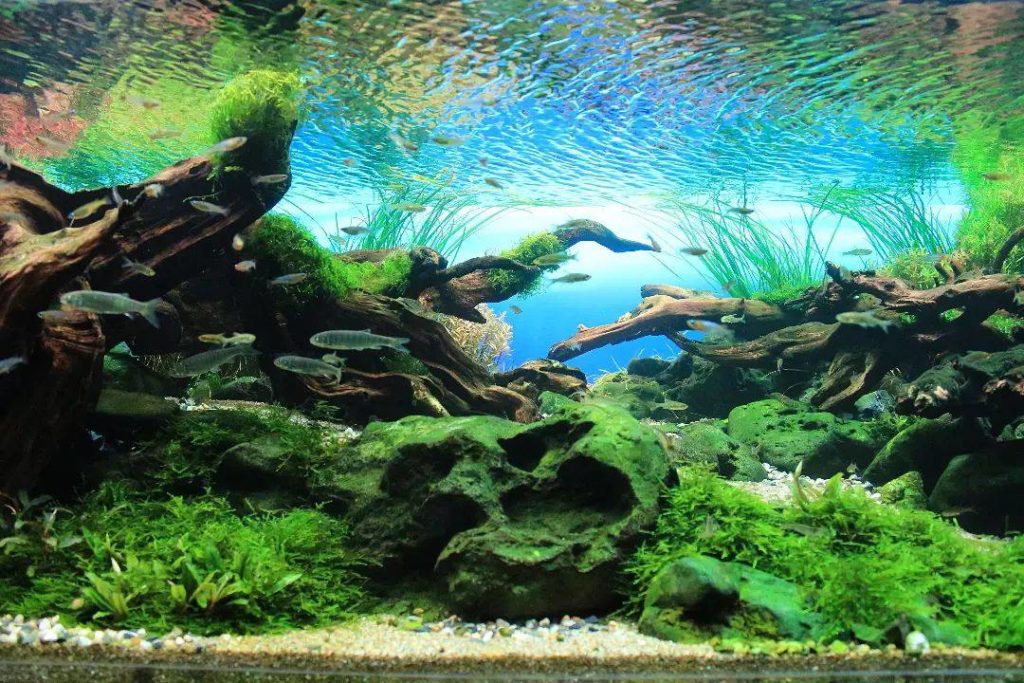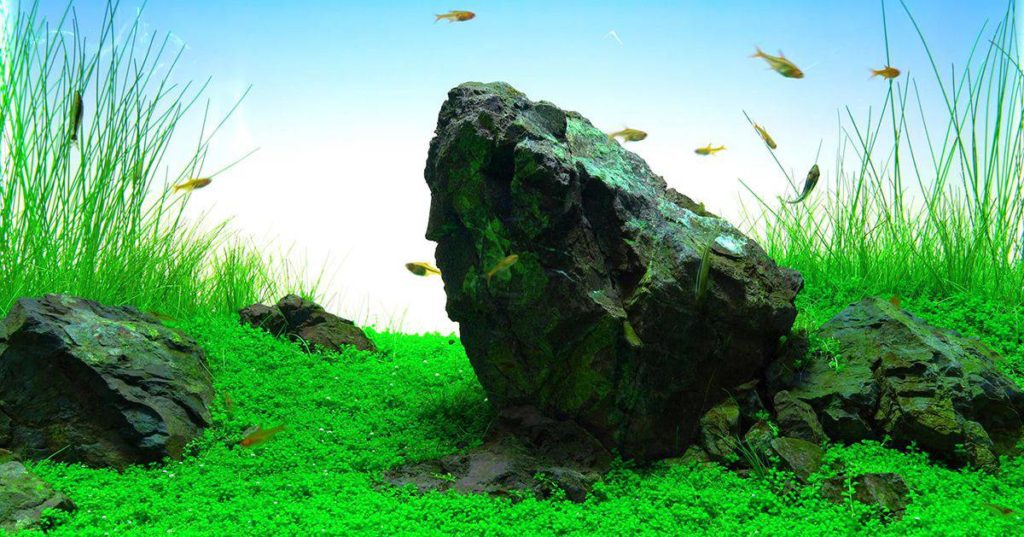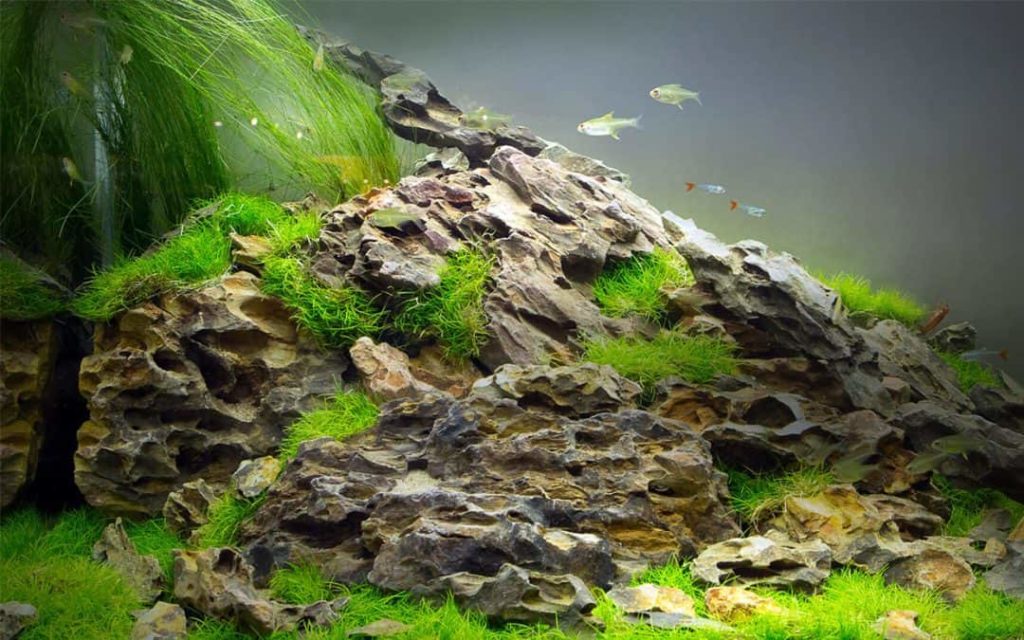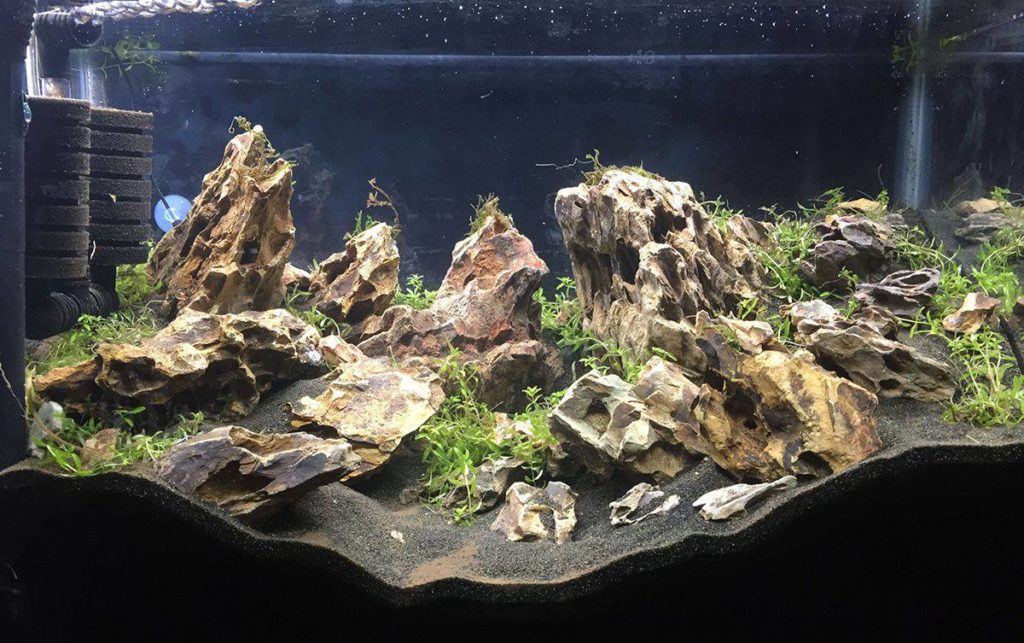Build Aquarium Safely – What Rocks Can be Put in Aquarium
Do you want to make your aquarium more attractive or provide more space for your fish to explore and gain enjoyment? If you want, rocks can play this role exactly. But what rocks can be put in aquariums? And what is the role of rocks? If you have such questions, it is worth reading this article, then you will get answers.
Content Table
What are aquarium rocks?
Aquarium rocks are one of the building materials for aquascape. The rocks come in different shapes, sizes, and colors. Some are with sharp edges, and you should soften them before introducing them into your aquarium. Or it may cause injury to your cute fish. Besides, there are three main types of rocks for aquariums, metamorphic, igneous, and sedimentary rocks.

The metamorphic rocks are created after undergoing pressure and the process of continuous heating and cooling. Rocks, such as slate, quartzite, and marble, are kinds of metamorphic rocks. On the other hand, igneous rocks are formed by cooling and solidifying molten earth. Basalt, dolerite, and gabbro are igneous rocks. Besides, the igneous rocks are crystalline. Moreover, sedimentary rocks are formed by deposits, particles, and cement. The rocks include limestone, sandstone, shale, and others.
The role of rocks in fish tanks
Provide places for fish to explore and hide
Fish will feel safe and comfortable if there are hiding places, and they enjoy exploring in tanks. Besides, provided that there are aggressive fish in your tanks, fish requires space to escape exactly. Furthermore, some fish also lay eggs or breed on rocks.
Reduce the stress on fish
A living environment similar to native habitat is helpful to reduce the stress on fish. And then they will not get diseases easily. Besides that, the appearance of your aquariums will be more authentic and natural.
Provide a surface for nitrifying bacteria
Nitrifying bacteria can colonize rocks. The bacteria are beneficial to aquariums because they can reduce the ammonia and nitrite levels in tanks. Porous rocks can play this role, such as lava rocks, and ecological rocks.
Change water parameters
Some rocks can change water parameters naturally. Take Texas holey rocks as an example, they can increase the pH level of water in aquariums.

Can stones be put in a fish tank?
Generally speaking, stones can be used in fish tanks. Taihu stone, stalagmite stone, coral stone, pebbles, and shells are commonly used. Take the Taihu stone as an example, it possesses a smooth surface, and gray. And it comes from Suzhou and Hangzhou areas in China. Moreover, they can be applied to aquariums with medium and large aquatic plants.
What rocks can be put in an aquarium?
Rocks for freshwater aquariums
1. Slate
The slate is created by volcanic activity. It possesses streaks and comes in colors, including grey, dark red, and green. The rock will not change the hardness and pH in aquariums. In addition, the slate can be applied to build cliffs or ledges for freshwater aquariums.
2. Quartzite
The quartzite is formed by heating and compressing the quartz sandstone. They are suitable for freshwater tanks and soft-water planted aquariums. The rocks are also named in colors, such as onyx bamboo, platinum black, and glacier wave.
3. Lava rock
Lava rocks are formed when the gasses in magma solidify and harden, and they are also famous as volcanic rocks. Besides, they are porous and possess many colors, such as deep orange, brick red, light red, and black. Moreover, the rocks will not release carbonate and calcium into aquariums, which reduces bad impacts on fish. And they can fertilize aquatic plants. Furthermore, the rocks could improve the filtration of tanks. They can promote oxygen levels and keep a stable pH level. And they can help fish to strengthen their immune system.

Rocks for saltwater aquariums
1. Fuji rock
Fuji rocks are light and easy to handle. Besides, they are mainly applied in reef aquariums. But they are not commonly available for a long time of shipment. And much marine life on rocks can not keep alive for a long shipment. So when the rocks arrive, you need to soak the rocks in saltwater for a few weeks to flush out the decaying marine life.
2. Pukani rock
The Pukani rocks are from Fuji rocks, but they are lighter than Fuji. Besides, they are porous, which holes for fish to explore and hide. Some depressions are good for the growth of coral frags. Furthermore, there are also algae on the live rocks.
3. Aquacultured live rock
The aquacultured live rocks are not created naturally but are artificial. They are scattered in oceans and will be colonized by marine life. On the other hand, the rocks are sustainable and will not be harmful to the reef system. So they also will not bring bad impacts on your fish and are ideal for saltwater aquariums.
In summary, not all rocks are suitable for aquariums. The types of aquariums and species of fish and creatures in tanks determine the ideal kinds of rocks. When you choose rocks, you should make sure the rocks are not dangerous. Because they may kill your fish as time went by, provided that there are harmful chemicals or other minerals in rocks.

Rocks can’t be put in an aquarium
There are no naturally colored stones, so most colored stones are dyed. If these dyed stones are placed in aquariums for a long time, the dyes will release, which is fatal for fish. So it is better not to put colored stones into fish aquariums. Natural stones are more suitable options, and you can place sand substrate on the tank bottom.
Besides, Jade stones are not ideal for aquariums. Because the water quality in the aquarium is not fit for them. And excreta of fish may lead to corrosion of them. Moreover, Larderite stones can not be placed in fish tanks for a long time. They are luster and low hardness. If they are soaked in water for the long term, they will get erosion.
Furthermore, take flourite as an example, it contains too many impurities, if they are placed in aquariums for a long time, the water quality will get affected, and it is not good for fish. On the other hand, you should check whether rocks will release calcium into water or change the water parameters. If they will, keeping balanced and stable water parameters will be a problem.
Reminder
Now, we believe you have finished reading, right? Have you got answers? By the way, if you plan to decorate your aquariums with some rocks, you can go to the article about clean fish tank rocks and substrates, and there are some tips for you.
- Avoid rocks with sharp edges and tiny pores. Or they may cause injury to your fish.
- Avoid too heavy rocks. Or they may lead to an overload of aquariums.
- Before putting rocks into aquariums, you should clean them. Soak them in boiling water for 10 minutes is viable for some rocks. However, it is not feasible to soak the coral stones in boiling water. If so, the bottoms of coral stones will turn yellow, and their appearance will be not so appealing.
- To avoid cracking or breaking the glass of your aquarium, it is better to add a layer of sand or gravel before placing rocks.
- Check the rocks before and after adding water. You should make sure that they are not loose.
That is all for today. Thank you for your reading!
